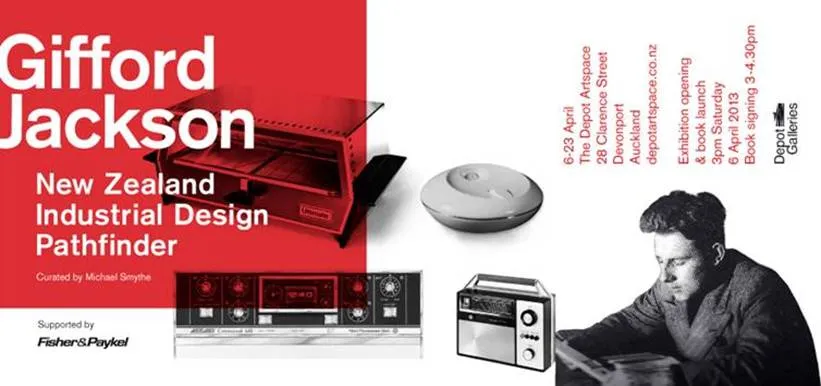Gifford Jackson, industrial design pathfinder

Gifford Jackson had to find his own pathway to the career in which he became a New Zealand leader. Growing up as an A-level student in Devonport between the World Wars he applied his talent to making many model boats and drawing his ideal houses. At the age of seventeen he travelled to Britain and studied naval architecture before joining the war effort as a trainee navigator. But it was the emerging profession of industrial design that really attracted his attention.
Having read about America’s pioneer designers Jackson gained a tantalising glimpse of their creative output when he visited New York on leave in 1944. It was a chance encounter at the Stage Door Canteen that would lead to a successful application to work in New York from 1949 to 1966. Meanwhile, back in Auckland after the war, his design draughtsman skills were employed at Fisher & Paykel. As well as detailing home appliances being made under licence he designed commercial refrigeration plants and layouts for milk bars and retail outlets.
Jackson returned home in 1966, aged 44, and applied his unique experience and skills to another 37 years in private practice. His presentation renderings and working drawings represent the best of the pre-computer era and, unlike many designers, he has kept them in good condition. He has maintained an excellent photographic record of his life’s work. New Zealanders may recognise his Ultimate toasters, Feltonmix shower Clearlite baths and PEC petrol pump. Farmers will know his PEL electric fence products. His 1974 exterior and interior Auckland Rapid Transit concepts would have stood the test of time had the project proceeded.